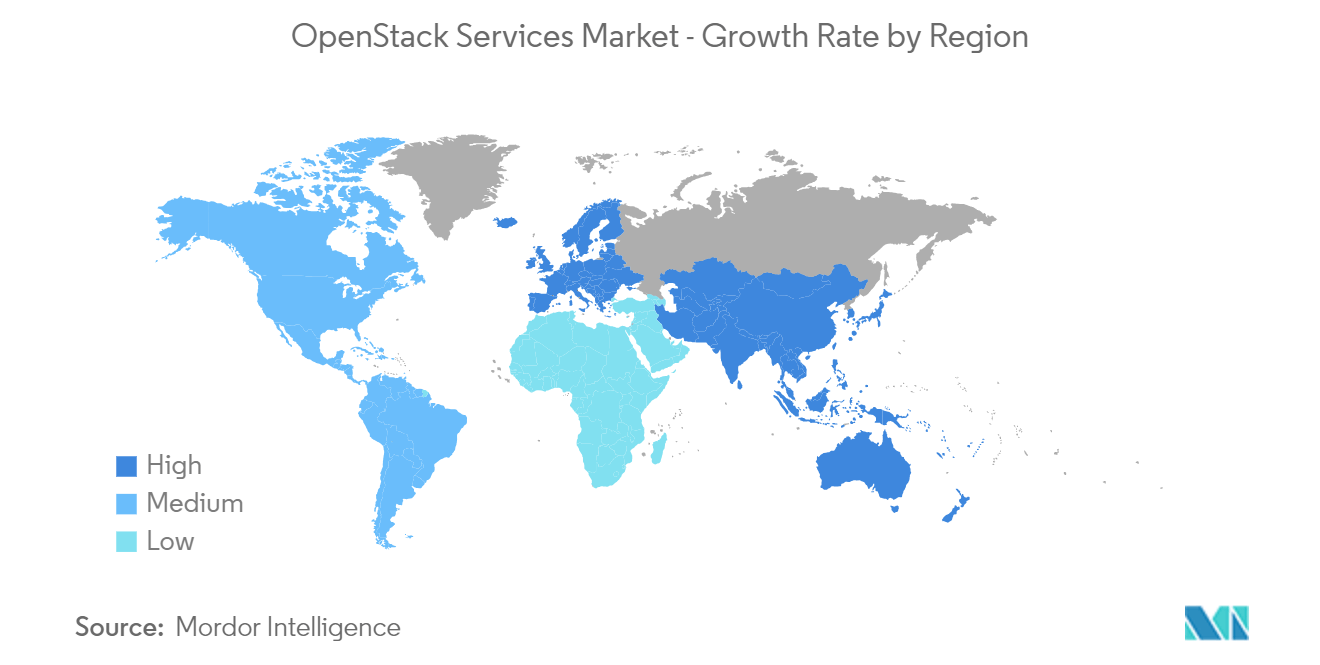Market Trends of OpenStack Services Industry
Increasing use of OpenStack Services Across Telecommunication Sector is Driving the Market
- The telecom industry has observed extensive growth during the past few years. Telecommunication companies are encountering constant pressure to deliver innovative services at lower costs to retain their customers in the competitive market. It allows telecom companies to deply and manage their cloud infrastructure without the high costs associated with proprietary solutions.
- OpenStack is an open source system that allows private and public clouds to be built and managed through a pooling of virtual resources. The core clouds computing services, such as compute, networking, storage, identities and images are handled by tools that comprise the OpenStack platform 'projects'. This capability is crucial for telecom operators looking to enhance their service offerings and operational efficiency.
- As a base of choice for operators, OpenStack has been chosen as their Network Function Virtualization NFV. NFV with OpenStack has been chosen by a wide range of telecom operators and business leaders. AT&T, Bloomberg LP., China Mobile, Deutsche Telekom, Nippon Telegraph & Telephone Corporation, SK Telecom and Verizon are among them.
- Moreover, OpenStack, including workloads such as 5G, has been used to power the biggest mobile telecommunications network. The mobile network of China Mobile has over 3 million base stations and 800 million subscribers an With over 50,000 servers, the largest Network of NFV today is built by China Mobile using OpenStack.

Asia-Pacific is Expected to Hold Significant Growth
- The majority of hyperscale cloud and telecom organizations in China are taking charge of adopting OpenStack services across the Asia Pacific region. Citing the use of OpenStack by companies such as Tencent and China Mobile, the OSF said these companies play a critical role in the rapidly growing OpenStack market in Asia-Pacific.
- Tencent, the company behind the WeChat super app and hyperscale cloud supplier, has been using OpenStack to power its operations and public cloud services that are being used by different industries. Also, at China Mobile, OpenStack is being used to deliver public and private cloud services and its telecom cloud to power its next-generation telco network.
- Users throughout the region are combining OpenStack and Kubernetes to solve big open infrastructure problems. They're increasingly leveraging projects like Airship and StarlingX, using open, composable infrastructure to meet the demands of applications operating in the region.
- China, which is expected to account for almost half of the world's OpenStack deployments, has the third-highest number of members in the OSF, an organization comprising users and contributors to the open infrastructure projects piloted and hosted by the organization. China Mobile has created an automated testing platform dubbed AUTO with OpenStack as one of its primary cloud deployment technologies. With an emphasis on scalability and performance, AUTO extensively utilized the OpenStack SDK and pre-existing testing tools to evaluate and confirm the cloud deployment.
- Multiple Chinese companies contribute upstream to the StarlingX project, including 99cloud, China UnionPay, and FiberHome. For instance, the Electronic Commerce and Electronic Payment National Engineering Laboratory of China UnionPay has researched a secured edge infrastructure powered by StarlingX for a contactless payment use case; with the evolution of 5G, technologies such as Multi-Access Edge Computing (MEC), Media Cloud.
- Artificial Intelligence (AI) has strongly emerged along with rapid growth in 5G network infrastructure. The infrastructure itself must evolve as a cloud-native service to fully support the development. Korea-based SK Telecom has been developing cloud-native infrastructure technology for the past few years and actively participates in global projects both in OpenStack Foundation (OSF), especially the Airship project in OSF.


